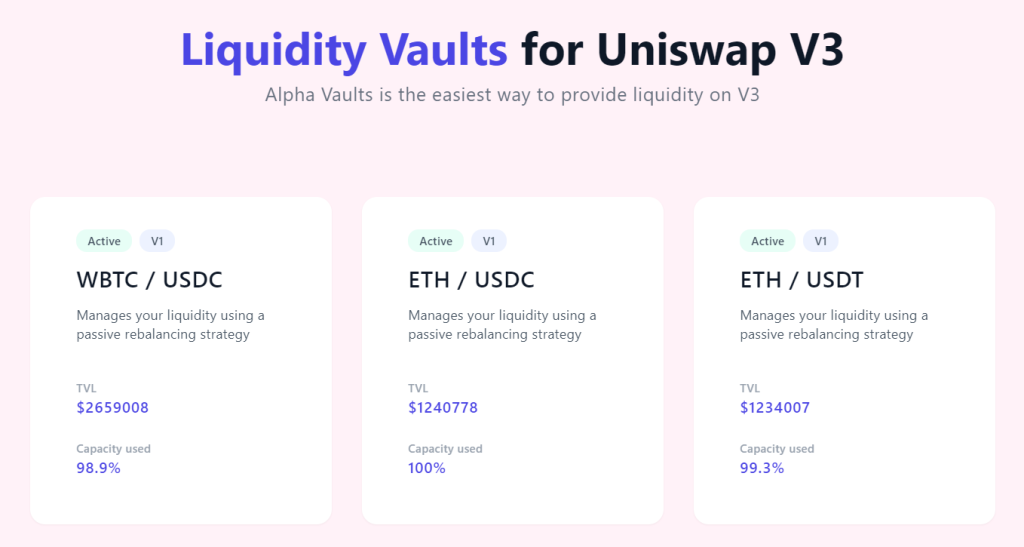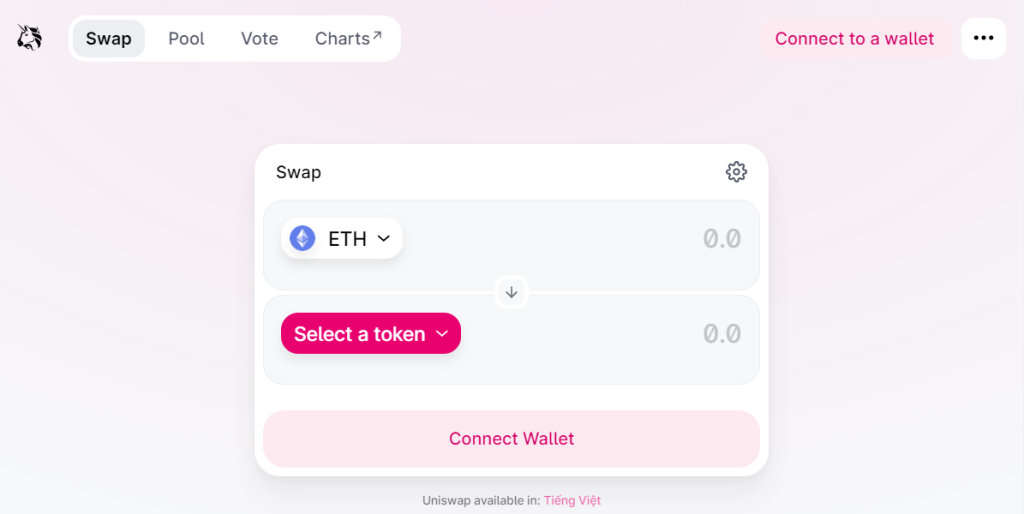
Uniswap v3 is the latest version of the decentralized exchange protocol on the Ethereum blockchain, offering significant improvements such as concentrated liquidity, multiple fee tiers, and enhanced price oracles. These features provide increased capital efficiency, better control for liquidity providers, and more accurate price data for traders.
Overview of Uniswap v3
Introduction to Uniswap v3
Uniswap v3 is the latest iteration of the popular decentralized exchange (DEX) protocol on the Ethereum blockchain. It introduces significant improvements over its predecessors, aiming to enhance capital efficiency, liquidity provision, and overall trading experience. Launched in May 2021, Uniswap v3 allows liquidity providers (LPs) to concentrate their capital within specific price ranges, thereby maximizing their earning potential and providing more precise control over liquidity allocation.
Key Features of Uniswap v3
Uniswap v3 boasts several innovative features that set it apart from previous versions and other DEX platforms:
- Concentrated Liquidity: LPs can now provide liquidity within custom price ranges, resulting in higher capital efficiency and better returns on investment. This feature allows LPs to allocate capital where it is most needed, reducing the amount of idle liquidity.
- Multiple Fee Tiers: Uniswap v3 offers three fee tiers (0.05%, 0.30%, and 1.00%), enabling LPs to choose their preferred level of risk and return. This flexibility helps accommodate different trading strategies and asset types.
- Advanced Price Oracles: The updated price oracle mechanism in Uniswap v3 enhances the reliability and accuracy of price feeds. This improvement ensures more secure and precise trading, reducing the likelihood of manipulation.
- Range Orders: This feature allows LPs to deposit single-sided liquidity that mimics limit orders within specified price ranges. Range orders enable more efficient trading strategies and reduce slippage.
- Improved Capital Efficiency: By allowing LPs to concentrate their liquidity, Uniswap v3 significantly improves capital efficiency. This enhancement means less capital is required to achieve the same level of market depth compared to previous versions.
- Enhanced Security: Uniswap v3 incorporates various security enhancements to protect user funds and ensure the integrity of the protocol. These improvements include more robust smart contract designs and comprehensive audits.

Concentrated Liquidity in Uniswap v3
How Concentrated Liquidity Works
Concentrated liquidity is one of the most significant innovations introduced in Uniswap v3. This feature allows liquidity providers (LPs) to allocate their capital to specific price ranges rather than across the entire price spectrum, as was the case in previous versions.
- Custom Price Ranges: LPs can specify the exact price ranges within which they are willing to provide liquidity. This means they can concentrate their assets where they believe the most trading activity will occur.
- Increased Liquidity Density: By focusing liquidity in narrower price bands, the pool becomes deeper in those ranges, leading to lower slippage for traders.
- Capital Efficiency: LPs can use their capital more efficiently, as funds are not spread thinly across inactive price ranges. This allows for higher returns on the same amount of capital compared to a traditional AMM (Automated Market Maker) model.
- Dynamic Adjustments: LPs have the flexibility to adjust their price ranges dynamically in response to market conditions. They can move their liquidity as prices fluctuate, optimizing their positions for better returns.
Benefits of Concentrated Liquidity
The introduction of concentrated liquidity in Uniswap v3 brings numerous benefits for both liquidity providers and traders:
- Higher Earnings for LPs: By concentrating their liquidity, LPs can earn higher fees because their capital is deployed more effectively within active trading ranges. This leads to better utilization of funds and higher potential returns.
- Reduced Slippage for Traders: Concentrated liquidity results in deeper liquidity pools at specific price points, which reduces slippage during trades. This makes Uniswap v3 more attractive to traders, especially for large transactions.
- Optimized Capital Use: LPs can achieve the same level of market depth with significantly less capital. This optimized use of capital allows for more efficient allocation of resources, potentially attracting more liquidity to the platform.
- Flexibility and Control: LPs have greater control over their investment strategies. They can choose to provide liquidity in multiple ranges simultaneously or adjust their positions based on market trends and personal risk tolerance.
- Enhanced Market Efficiency: Concentrated liquidity contributes to more efficient price discovery. With liquidity concentrated around active trading prices, the market can respond more quickly to changes, leading to tighter spreads and more accurate pricing.
Advanced Fee Tiers in Uniswap v3
Understanding Fee Tiers
Uniswap v3 introduces advanced fee tiers, providing liquidity providers (LPs) with the flexibility to choose the fee structure that best aligns with their risk tolerance and trading strategies. There are three main fee tiers:
- 0.05% Fee Tier: This tier is designed for assets that are typically less volatile and have high trading volumes, such as stablecoins. The lower fee encourages more trading activity by minimizing transaction costs.
- 0.30% Fee Tier: This is the standard fee tier and is suitable for most trading pairs, including major cryptocurrencies. It balances between providing LPs with adequate returns and keeping trading costs reasonable for users.
- 1.00% Fee Tier: This tier is intended for more volatile or less liquid assets. The higher fee compensates LPs for the increased risk and potential lower trading volume, making it attractive for niche or high-risk markets.
Each fee tier allows LPs to optimize their earnings based on the characteristics of the assets they are providing liquidity for.
Choosing the Right Fee Tier
Selecting the appropriate fee tier is crucial for maximizing returns and managing risk. Here are some factors to consider when choosing the right fee tier:
- Asset Volatility:
- For stablecoins or pairs with low volatility, the 0.05% fee tier is ideal. It minimizes trading costs, encouraging more frequent trades and higher volume.
- For major cryptocurrencies with moderate volatility, the 0.30% fee tier strikes a good balance between attracting trades and providing sufficient returns to LPs.
- For highly volatile or less liquid assets, the 1.00% fee tier is recommended. It offers higher compensation for LPs to offset the risks associated with these assets.
- Trading Volume:
- Pairs with high trading volumes benefit from lower fee tiers as the frequent trades can accumulate substantial fees over time, even at lower rates.
- Pairs with lower trading volumes might need higher fee tiers to ensure that LPs are adequately compensated for providing liquidity despite fewer transactions.
- Market Conditions:
- During periods of high market volatility or significant price movements, higher fee tiers can protect LPs from potential losses due to large price swings.
- In stable market conditions, lower fee tiers can boost trading activity by making transactions cheaper for traders.
- Personal Strategy:
- LPs should consider their own risk tolerance and investment strategy. Conservative investors might prefer lower fee tiers with more stable returns, while those willing to take on more risk for higher potential rewards might opt for higher fee tiers.

Improved Price Oracles in Uniswap v3
Functionality of Price Oracles
Price oracles play a critical role in decentralized finance (DeFi) by providing accurate and reliable price data for various assets. In Uniswap v3, the functionality of price oracles has been significantly enhanced to offer more precise and secure data.
- Time-Weighted Average Prices (TWAPs): Uniswap v3 uses time-weighted average prices to mitigate the effects of short-term price fluctuations and manipulation. By averaging prices over a specified time period, TWAPs provide a more stable and accurate reflection of an asset’s value.
- On-Chain Data: The price oracles in Uniswap v3 are fully on-chain, meaning that all price data is sourced directly from the blockchain. This enhances transparency and security, as the data is immutable and verifiable by anyone.
- Granularity: Uniswap v3 oracles offer greater granularity, allowing for more precise price calculations. This is particularly important for applications that require fine-grained price data, such as lending platforms and derivatives.
- Improved Data Accuracy: The oracles in Uniswap v3 leverage the platform’s deep liquidity pools to ensure that the price data reflects the true market conditions. This reduces the likelihood of discrepancies and inaccuracies in the reported prices.
Benefits of Improved Oracles
The enhancements to price oracles in Uniswap v3 bring several key benefits, making them more reliable and effective for a wide range of DeFi applications:
- Enhanced Security: By using on-chain data and TWAPs, Uniswap v3 oracles are less susceptible to manipulation and attacks. This ensures that the price data is trustworthy and secure, providing a solid foundation for financial transactions and smart contracts.
- Increased Reliability: The improved granularity and accuracy of the price oracles mean that they can be relied upon for critical functions in DeFi ecosystems, such as collateral valuations, liquidations, and automated trading strategies.
- Better Market Efficiency: Accurate and reliable price data contributes to more efficient markets by enabling fairer pricing and reducing arbitrage opportunities. This benefits traders, liquidity providers, and other market participants by creating a more stable and predictable trading environment.
- Support for Complex DeFi Applications: The improved oracles enable more sophisticated DeFi applications that require precise and reliable price feeds. This includes derivatives, lending platforms, automated market makers, and more, expanding the range of possibilities within the DeFi ecosystem.
- Transparency and Trust: On-chain price data enhances transparency, allowing users to verify prices independently. This builds trust in the system and encourages greater participation from users and developers alike.

Range Orders in Uniswap v3
What Are Range Orders?
Range orders in Uniswap v3 allow liquidity providers (LPs) to deposit liquidity within specific price ranges rather than across the entire price spectrum. This functionality gives LPs more control over how their capital is used and helps to optimize their earnings based on market conditions.
- Custom Price Bands: LPs can choose precise upper and lower price bounds within which they want to provide liquidity. This means their liquidity will only be active and earn fees when the market price is within these set ranges.
- Single-Sided Liquidity: Range orders can be structured in a way that mimics limit orders, allowing LPs to deposit liquidity on one side of the market (either just above or just below the current price) to buy or sell tokens at specific price points.
- Automated Market Making: As the market price moves through the specified range, the liquidity is used to facilitate trades. Once the price moves out of the range, the liquidity becomes inactive until the price re-enters the range.
Advantages of Using Range Orders
Range orders provide several significant benefits for liquidity providers and traders, enhancing the flexibility and efficiency of liquidity provision on Uniswap v3.
- Higher Capital Efficiency: By concentrating liquidity within specific price ranges, LPs can maximize the use of their capital. This leads to higher potential returns since the liquidity is not spread thinly across inactive price points.
- Improved Earnings: LPs can earn more fees by strategically placing their liquidity in ranges where they expect higher trading activity. This targeted approach can significantly boost returns compared to providing liquidity across a broader range.
- Reduced Impermanent Loss: Range orders can help mitigate impermanent loss by allowing LPs to provide liquidity closer to their entry price. By focusing on narrower ranges, LPs can better manage the risks associated with price volatility.
- Greater Flexibility and Control: LPs have the flexibility to adjust their ranges based on market conditions, personal investment strategies, and risk tolerance. This adaptability allows for more sophisticated and responsive liquidity provision strategies.
- Enhanced Trading Strategies: Traders can use range orders to execute more precise trading strategies. For example, they can place liquidity at specific levels to act as buy or sell orders, effectively setting limit orders within the automated market maker framework.
- Increased Market Depth: Concentrated liquidity in active trading ranges results in deeper market liquidity, reducing slippage for large trades and improving the overall trading experience on the platform.

Enhanced Security Measures in Uniswap v3
Security Features Overview
Uniswap v3 incorporates several advanced security measures designed to protect user funds and ensure the integrity of the protocol. These features aim to mitigate risks associated with decentralized finance (DeFi) platforms and enhance user trust.
- Immutable Smart Contracts: Uniswap v3 relies on immutable smart contracts deployed on the Ethereum blockchain. Once deployed, these contracts cannot be altered, ensuring that the protocol operates exactly as intended without any risk of tampering.
- Rigorous Audits: The Uniswap v3 codebase has undergone multiple comprehensive security audits by reputable firms. These audits help identify and address potential vulnerabilities before the protocol is launched.
- Formal Verification: Formal verification techniques are used to mathematically prove the correctness of certain aspects of the smart contracts. This reduces the likelihood of bugs or vulnerabilities in critical components.
- Minimal Governance: Uniswap v3 operates with minimal governance, reducing the risk of governance attacks and ensuring that the protocol remains decentralized and resistant to manipulation.
- Emergency Shutdown Mechanisms: The protocol includes mechanisms to pause or disable certain functions in the event of a security breach or other critical issues. This allows for quick responses to unforeseen threats.
How Uniswap v3 Enhances Security
Uniswap v3’s enhanced security measures provide several key benefits that contribute to a safer and more reliable decentralized exchange environment:
- Protection Against Hacks: The immutable nature of the smart contracts and rigorous auditing process significantly reduces the risk of hacks and exploits. Users can trust that their funds are secure within the protocol.
- Prevention of Tampering: By deploying immutable smart contracts, Uniswap v3 ensures that no one can alter the code after deployment, protecting against malicious actors attempting to introduce vulnerabilities.
- Reduced Risk of Bugs: Formal verification and extensive testing minimize the risk of bugs within the protocol. This helps maintain the stability and reliability of Uniswap v3, even under high transaction volumes.
- Decentralization and Trustlessness: Minimal governance and reliance on decentralized mechanisms enhance the trustlessness of Uniswap v3. Users do not need to trust a central authority, as the protocol operates autonomously and transparently.
- Responsive Security Measures: Emergency shutdown mechanisms allow the Uniswap team to quickly address and mitigate threats, protecting user funds and maintaining the integrity of the platform in emergency situations.
- Enhanced User Confidence: The combination of these security features instills confidence in users, encouraging greater participation in the Uniswap ecosystem. This trust is crucial for the growth and adoption of decentralized finance.

Migration from Uniswap v2 to v3
Steps to Migrate Liquidity
Migrating liquidity from Uniswap v2 to v3 involves several key steps to ensure a smooth and efficient transfer of your assets. Here’s a detailed guide:
- Access the Uniswap Interface: Open the official Uniswap interface through a secure web browser and connect your wallet. Ensure your wallet has enough Ethereum (ETH) to cover gas fees.
- Use the Migration Tool: Locate the migration tool on the Uniswap interface designed for moving liquidity from v2 to v3. This tool simplifies the migration process.
- Select Your Liquidity Pools: Identify the liquidity pools from which you want to migrate your assets. You will see your existing positions listed within the migration tool.
- Approve Token Transfers: Grant permission for the Uniswap smart contract to transfer your tokens from v2 to v3. This step may require you to approve multiple transactions, depending on your tokens and pools.
- Specify Price Ranges: In Uniswap v3, you need to set price ranges for your liquidity. This allows you to concentrate your liquidity within specific bands, optimizing capital efficiency.
- Confirm and Execute: Review the migration details, including your chosen price ranges and the amount of liquidity being transferred. Confirm the transaction to complete the migration. You may need to confirm multiple transactions.
- Monitor Your New Positions: After the migration is complete, keep an eye on your new liquidity positions in Uniswap v3. Adjust your price ranges and liquidity allocation as needed based on market conditions.
Benefits of Migrating to v3
Migrating from Uniswap v2 to v3 offers numerous benefits, enhancing the efficiency, profitability, and security of your liquidity positions.
- Increased Capital Efficiency: Uniswap v3 allows you to concentrate liquidity within specific price ranges, resulting in higher capital efficiency and potentially greater returns on your investments.
- Flexible Fee Tiers: Uniswap v3 introduces multiple fee tiers (0.05%, 0.30%, and 1.00%), enabling you to choose the most suitable fee structure for your risk tolerance and trading strategy.
- Enhanced Price Oracles: The improved price oracles in v3 provide more accurate and reliable price data, reducing the risk of manipulation and ensuring fairer trading conditions.
- Advanced Range Orders: Uniswap v3’s range orders feature allows you to set specific price bands for your liquidity, similar to limit orders. This gives you more precise control over your trading strategies.
- Improved User Experience: The updated interface and tools in Uniswap v3 are designed to be more user-friendly, making it easier to manage your liquidity positions and utilize new features.
- Better Market Depth: Concentrated liquidity in active trading ranges results in deeper market liquidity, reducing slippage for large trades and improving overall trading efficiency.
- Reduced Impermanent Loss: By enabling liquidity to be concentrated closer to market prices, Uniswap v3 helps mitigate impermanent loss, enhancing the stability and profitability of your liquidity positions.